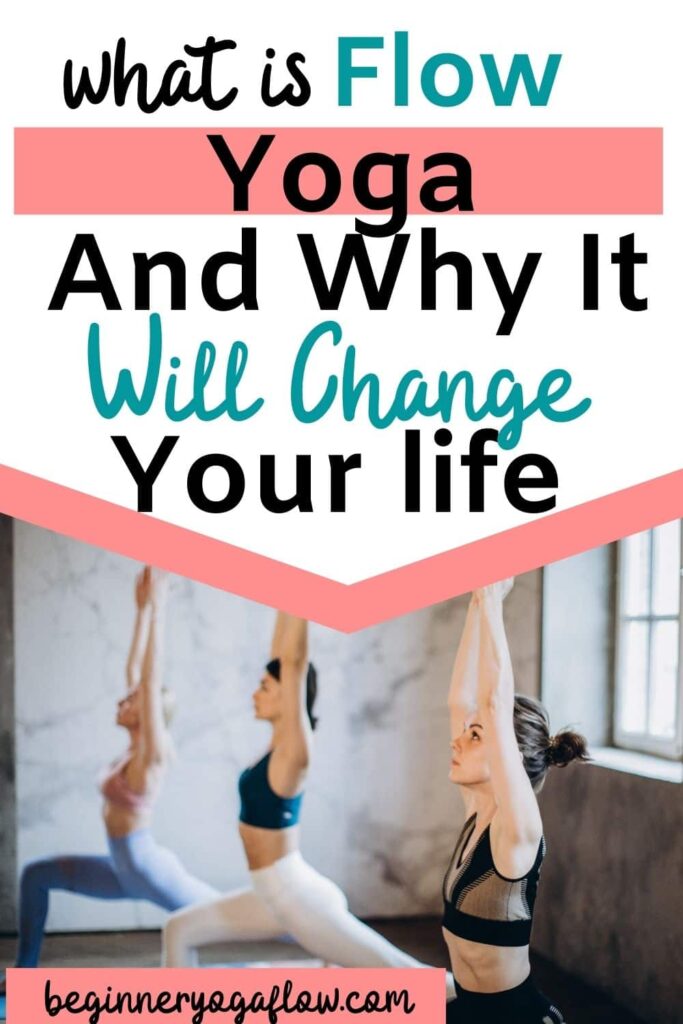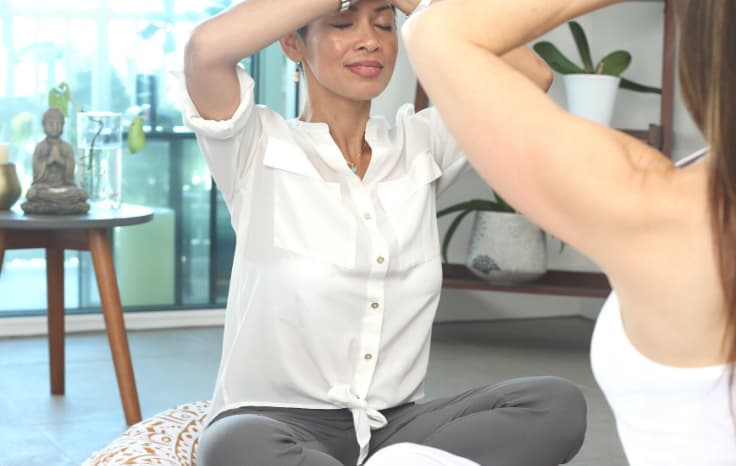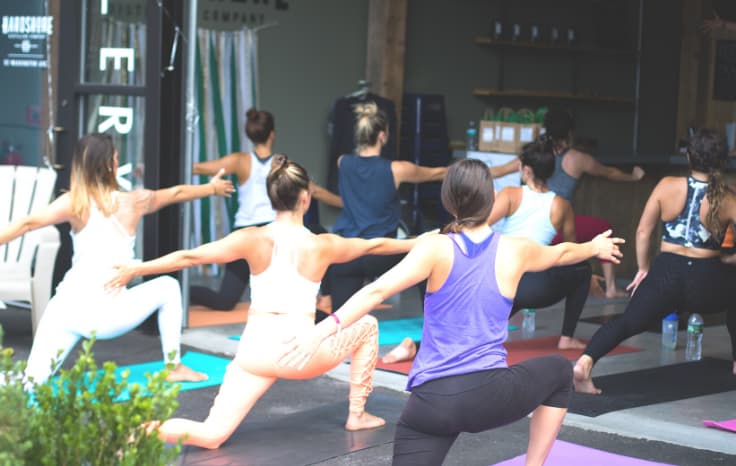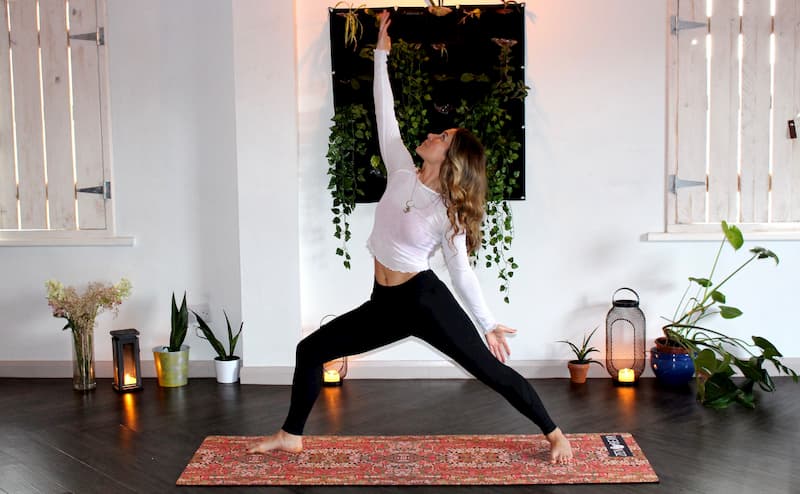Vinyasa yoga, often referred to as flow yoga, is a style of yoga where participants smoothly transition from one pose to the next. These transitions are guided by the breath to create a fluid sequence of asanas (poses).
In contrast to other styles of yoga, you’ll often hear instructions from the teacher about moving on the breath. For example, “Inhaling the arms up, exhaling as we swan dive forward”.
One of the features of vinyasa yoga that draws people in is that there is a high level of variability in flow classes. Vinyasa classes include creative flows with lots of variety in the sequences of the poses.

Because there is no one lineage or creator of flow yoga, the training and experiences of each individual teacher will inform how they sequence and develop their classes.
Some flow classes will be built around a “peak pose” while others will focus on a theme such as opening the hips.
The poses you’ll find in a flow class will also vary by instructor. Other styles of yoga such as a Bikram yoga, follow a specific sequence of set poses that are practiced in each class.
Oftentimes flow classes are equated to power yoga classes. While flow yoga can be fast paced and powerful workouts, they can also be slow and gentle.
This breath connected movement may be thought of as a moving meditation and those that practice flow yoga find the link between the breath and movement through the poses a great way to begin to develop their meditative skills.
Benefits of flow yoga

- The variability of postures and power levels helps to create a balance throughout the body. This variability can be helpful in preventing injury and provide opportunities to train the body through different ranges of motion.
- It’s a cardiovascular workout too! Flow classes provide a cardiovascular workout. Because participants are continuously moving and flowing, rather than holding a pose for an extended period of time, there are more opportunities to bring the heart rate up. Sun Salutations are a common sequence found in flow classes that are meant to generate heat and provide a cardio workout.
- They’re fun! You won’t get bored knowing exactly what is coming next because each class provides a variation in movements. Plus, you can take classes with different teachers knowing you’ll have a unique experience in each class.
What to expect in a Vinyasa Flow yoga class

Because there is so much variability in flow classes, always read the description of a flow yoga class to get a good idea of what you can expect when you get on your mat.
There are some commonalities you’ll find in all classes
- Be ready to breathe. Flow classes will incorporate breath work, and you can expect to practice ujjayi breath in a flow class.
- You’ll work up a sweat, even if it’s just a gentle glow.
- There will be time for meditation, also known as savasana.
- Opportunities for rest. In flow classes the instructor will provide opportunities for rest, often in child’s pose, and you are instructed to take those breaks whenever you need them. So don’t be shy and listen to your body!
Vinyasa as a verb
You might also hear during a class the teacher instructing you to take a vinyasa after a sequence is performed on one side of the body.
Most often when an instructor says to take a vinyasa they are referring to a sequence of 3 movements which are part of Sun Salutations. The sequence is as follows:
- Plank/Kneeling plank
- Chaturanga/kneeling Chaturanga
- Upward Facing Dog/Cobra
The purpose of the vinyasa is to balance the energy through the body before moving on to performing the sequence on the other side.
